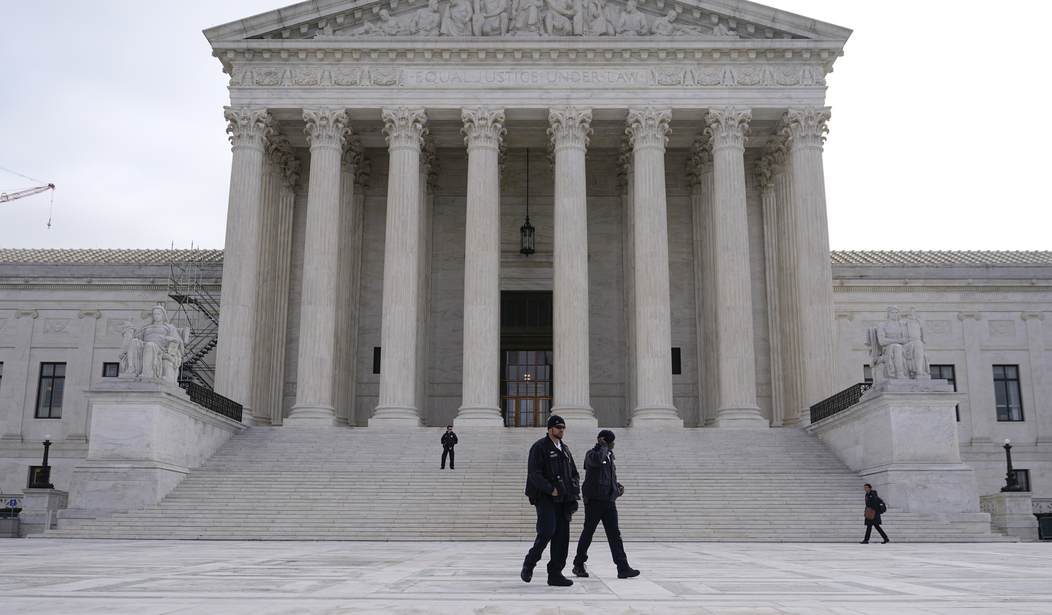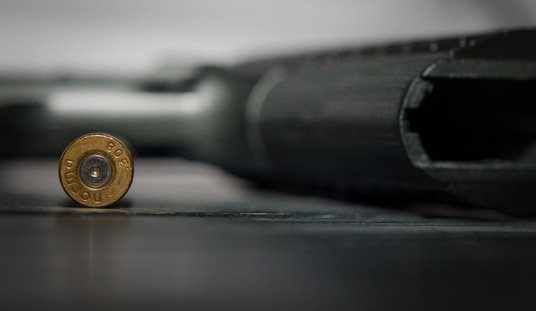Since the Bruen decision was handed down a year ago the Supreme Court has largely stayed on the sidelines as lower courts have wrestled with the implications of the ruling and the history, text, and tradition test the Court laid out to determine the constitutionality of gun control laws; declining to intervene in emergency challenges to New York’s post-Bruen carry restrictions, for instance, as well as Illinois’ ban on “assault weapons” and “large capacity” magazines.
There was a lot of anticipation that today would be the day SCOTUS would step back into the fray by granting cert in a case called U.S. v. Rahimi that deals with firearm possession by someone subject to a domestic violence restraining order, but when the Court’s orders from last week’s conference came out on Monday morning, Rahimi was nowhere to be found. The justices neither granted nor denied cert, choosing instead to keep the case in conference as debate continues behind closed doors, and gun control groups are already freaking out about the (non) decision.
“The Fifth Circuit’s extreme and reckless decision in United States v. Rahimi is a death sentence for women and families.
We are deeply disappointed that the Supreme Court did not grant certiorari in Rahimi in last week’s conference.
Lives are on the line. The Supreme Court…
— Everytown (@Everytown) June 26, 2023
The histrionics on the part of Everytown aren’t surprising or anything new, nor are they likely to have any influence on whether or not justices ultimately accept the case. But it is somewhat surprising that SCOTUS remained silent on Rahimi today, especially since we’re coming up on the end of the term and the justices’ summer recess.
June 22 was the last regularly scheduled conference of the term, but the justices traditionally hold a "clean-up" conference b/4 they leave for their summer recess. Last year they granted 3 cases from that conference. https://t.co/RYg0Ln6AO4
— Amy Howe (@AHoweBlogger) June 26, 2023
It’s entirely possible that the Court will include Rahimi in its “clean-up” conference, the results of which will likely be released later this week. Last year June 23rd was the last conference of the term, and orders were released on the following Monday and Thursday (the 27th and 30th, respectively). If SCOTUS follows suit this year, we should learn what, if any, additional cases the Court has accepted this Thursday. If Rahimi isn’t on the list, however, it will likely be at least August before the Court takes up the case, if at all.
Can we read any tea leaves in the Court’s decision to kick this can down the road for at least a few more days? Not really, unfortunately. We know that it takes four justices to agree to grant cert, but we don’t know why Rahimi apparently didn’t meet that bar on first examination. It could be as simple as one or more justices wanting to write a dissent to the decision and their colleagues giving them a couple of extra days to do so, or it could be a sign that the Court is continuing its hands-off approach while appellate courts are starting to apply the Bruen test instead of the two-step, tiered scrutiny approach adopted after the Heller decision.
We’ll have a much clearer picture come the clean-up conference, but I think there’s still a better than average chance that Rahimi is granted cert for the fall term. There’s definitely a split between the Fifth Circuit and other appellate courts on defining the scope of who, exactly, is covered by the Second Amendment’s protections, though Rahimi is the first case to reach the High Court that deals specifically with the prohibition on firearms possession for those subject to a domestic violence restraining order. It would be truly surprising if there weren’t four justices ready to weigh in on the Fifth Circuit’s decision, though those in favor of accepting the case may very well include justices who would vote to uphold the Fifth Circuit’s ruling as well as those who would strike it down.
While we’re waiting to see what, if any, action the Court will take, it’s worth re-reading the Fifth Circuit’s opinion and its reasoning in tossing out the federal prohibition on gun ownership for those subject to a domestic violence restraining order. As the appeals court noted in its very first sentence of the Rahimi decision, “The question presented in this case is not whether prohibiting the possession of firearms by someone subject to a domestic violence restraining order is a laudable policy goal.” Instead, the Fifth Circuit says the question “is whether 18 U.S.C. § 922(g)(8), a specific statute that does so, is constitutional under the Second Amendment of the United States Constitution. In the light of N.Y. State Rifle & Pistol Ass’n, Inc. v. Bruen, 142 S. Ct. 2111 (2022), it is not.”
How did the Court reach its conclusion? By deciding that the government’s argument that the Second Amendment only applies to “law-abiding citizens” is foreclosed by the text, history, and tradition of the right to keep and bear arms in this country. While the Fifth Circuit didn’t discount the possibility that those convicted of felonies or felony-equivalent offenses, Zachey Rahimi hadn’t been convicted of any such crime when he was barred from possessing a firearm.
From the record before us, Rahimi did not fall into any such group at the time he was charged with violating § 922(g)(8), so the “strong presumption” that he remained among “the people” protected by the amendment holds. When he was charged, Rahimi was subject to an agreed domestic violence restraining order that was entered in a civil proceeding. That alone does not suffice to remove him from the political community within the amendment’s scope. And, while he was suspected of other criminal conduct at the time, Rahimi was not a convicted felon or otherwise subject to another “longstanding prohibition[] on the possession of firearms” that would have excluded him.
Indeed, the upshot of the Government’s argument is that the Second Amendment right can be readily divested, such that “a person could be in one day and out the next: . . . his rights would be stripped as a self-executing consequence of his new status.” But this turns the typical way of conceptualizing constitutional rights on its head. And the Government’s argument reads the Supreme Court’s “law-abiding” gloss so expansively that it risks swallowing the text of the amendment.
… Further, the Government’s proffered interpretation of “law-abiding” admits to no true limiting principle. Under the Government’s reading, Congress could remove “unordinary” or “irresponsible” or “non-law abiding” people—however expediently defined—from the scope of the Second Amendment. Could speeders be stripped of their right to keep and bear arms? Political nonconformists? People who do not recycle or drive an electric vehicle? One easily gets the point: Neither Heller nor Bruen countenances such a malleable scope of the Second Amendment’s protections; to the contrary, the Supreme Court has made clear that “the Second Amendment right is exercised individually and belongs to all Americans,” Heller, 554 U.S. at 581. Rahimi, while hardly a model citizen, is nonetheless among “the people” entitled to the Second Amendment’s guarantees, all other things equal.
The Rahimi case doesn’t directly pose a threat or a challenge to the blanket prohibition on gun ownership for those convicted of felonies, but it could still open up a can of worms if the Court grants cert that goes beyond the statute in question. “Red flag” laws that are on the books in more than a dozen states around the country, for instance, are civil, not criminal in nature (just like a domestic violence restraining order) and can be imposed on individuals who’ve never been accused of a crime, much less arrested or charged with a criminal offense. If the federal statute Zachey Rahimi is charged with is found to be unconstitutional, I suspect it would be very difficult for states to defend the “temporary” loss of Second Amendment rights for those subject to an Extreme Risk Protection Order, especially since many states allow those orders to be extended without limit.
If I had to hazard a guess I’d say that SCOTUS is going to grant cert to Rahimi, even if a substantial number of justices would prefer to let the lower courts fight it out a while longer. That’s just informed speculation on my part, however, and I’m very curious to see what, if anything, comes out of the Court’s clean-up conference and orders in a few days.









